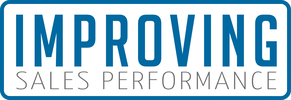 Two of the most important elements of effective sales are (1) understanding your clients, and (2) offering a solution that meets their needs. After all, if you don't know who your end users are or what they need, how will you possibly convince them to buy from you? The process of getting to know your target customers and adapting your offerings to their pain points and goals dovetails nicely with the concept of ideation. Let's talk about what we mean by that term, and how it can help your team to improve their sales performance. What is Ideation? One definition of ideation is "the process of developing and conveying prescriptive ideas to others, typically in a business setting. It describes the sequence of thoughts, from the original concept to implementation." In plain English, ideation is the process of developing and implementing ideas. Ideation is a big deal because employees and leaders that are 100 percent focused on going through the motions of their job will miss opportunities to improve their products, services, or strategies. It takes time and effort to temporarily step away from the routine tasks of your job and meditate on new concepts. However, the rewards of ideation are well worth the investment. Just ask Beethoven, Einstein, and other geniuses of art and science who produced masterpieces through hours of deep thought. (But don't worry. You don't have to be the next Einstein to think up a great idea!) Examples of Ideation
There are several examples of ideation at work in the corporate world. Steve Jobs may immediately spring to mind. His innovative approach to consumer electronics was the result, in part, of focused meditation on what customers wanted, and how Apple's products could fill those needs. Google is another example (at least in its early days). At one point, the company encouraged employees to spend up to one-fifth (20 percent) of their time at work meditating on new ideas that intrigued them, and could eventually become solutions to real-world problems. Even toothpaste companies have taken advantage of ideation as a business strategy. For instance, back in the 80's the team at Unilever had to brainstorm ways to compete with the two "toothpaste giants," Colgate and Crest. The solution? The world's first baking soda and peroxide toothpaste, Mentadent, which sold very well as a "specialized" product. The point is, incorporating ideation into your business plan makes good sense, and can open doors for your team that you would never have known about otherwise. So now the question is: How does ideation specifically relate to the sales process? Integrating Ideation into the Sales Process If you really want to help your clients meet their business objectives, then it's important to lead them through the ideation process. This means taking them through two important steps: discovery and ideation. 1. Discovery In the first phase of the ideation process, you want to learn everything you possibly can about the client. Many companies will ask: "What's the main problem the client is facing?" and stop there. While that is a key question you need to answer, you have to go deeper than that. For one thing, you want to divide that question into two parts. What challenge is the company facing? And what challenge is the individual (or team) facing? It's important to delve into both of these factors. Even if you have a "big picture" solution in your back pocket, it may not resonate with your client until they understand how it will affect them and their team personally. Ask the "magic wand" question. In other words: "If you could wave a magic wand and instantly solve all of your business problems, what would that reality look like?" And this is key: listen to their answer. (It's amazing how much of effective sales is listening to the client, versus talking to them.) When you're in the discovery phase, come armed with basic questions like:
This process of discovery is critical. You'll not only understand exactly where your client is coming from, but the answers to these questions will also set you up for step #2: ideation. 2. Ideation In the ideation phase, your main objective is to throw as many ideas as you can into the hat. In order to do that, you want to bring together as many stakeholders as you possibly can. This includes everyone from your original discovery session, plus any domain experts, the client's production team (if applicable), and so forth. Think of it as a mass brainstorming session with a clear focus. Once everyone has assembled, draw a 2x2 matrix on the whiteboard. Mark your first column "individual;" your second column "company;" your first row "problems;" and your second row "solutions." Start with the problems row. List out all the challenges and pain points that you identified in the discovery phase, both for individuals and for the company as a whole. (And remember, discussing individual challenges is a huge difference-maker throughout the entire process). Ask your audience if you missed any questions or pain points in the original discovery session. If they come up with any, write those down for future reference. Next comes the fun part: brainstorming solutions to the client's problems. It's okay if your team comes up with ideas that are completely nuts! The point of this exercise is to explore all the options and opportunities that are open to your client, and think about ways to implement the best solutions. At the end of this process, you need to make sure that there's follow-through in two key areas:
The entire ideation process can take anywhere from half an hour to a full day. But if you take the time to go through it, your team may come up with some truly amazing solutions. And your sales performance will improve as a result. If you'd like more insights on how you can improve your sales leadership, contact us or sign up for our newsletter for more valuable resources. I'm often asked, how do you engage your audience? It starts with a passion for your topic. But even if you have that nailed, a PowerPoint with a bullets isn't going to cut it. When you speak to an audience you are part domain expert and part entertainer. You have to be, especially if you want your message to be remembered. At many of the events I speak at there are all types of speakers. From professional keynotes who can guarantee a fun learning experience to association members who volunteered to run a breakout for the first time. And do you know what they all have in common? Hint - it's in the first paragraph of this post. It's passion - speakers are there because they deeply believe in what they want to share with the audience. They have something to say and they want to say it. Passion is essential. It's the fuel for a speaker. And believe it or not, it's what the audience is longing for too. One of the best secrets in public speaking is to realize that your audience is wanting to get inspired, to learn, to be moved. That's why they are there. Audiences want to embrace your passion completely. Remember that if you're planning to speak at an event. It will make it easier for you when you take the stage. It's a simple formula, speakers want to share their passion and audiences want to embrace it. But passion alone isn't always enough to engage audiences. Passion sets the stage for a speaker and allows him or her to get in the proper head space to take the stage. But it takes more than that to really engage audiences. Here are three best practices I follow to deliver my passion in a way that engages audiences. [Watch the video: How Chance Favors The Prepared In Sales] Three best practices for engaging audiences:
In closing, there is a tremendous amount of satisfaction for both the speaker and the audience when passion is shared and engagement is created. There’s an easy way to produce engaging content for your association – ask domain experts to create it for you. [Hint – There are individuals out there that are passionate about what they do and would love to write about it and share it with your membership, and for free!]
If you love this idea, there are a few things to consider to really make this a successful strategy.
Below are the steps we recommend to create a win-win partnership with a domain expert.
As a real-world example, let me share with you how this works with our company.
Audience engagement is an illusive goal for many public speakers. My grandfather once told me that he started every presentation with a joke, to warm up his audience and break the ice. So here we go...
Knock knock. Who's there? Four different types of learners. Four different types of learners who? Are in your audience who came to be engaged, to learn and be inspired. Ok, so you're not rolling on the floor laughing, probably because it's not really funny. But, it is true. Your audience will be filled with all different types of people, and they will all be there for the same reason - to have an experience and to learn. We all learn differently, so it's critical to develop presentations that engage audiences in the various ways humans learn and interact with information. After all, we want our audiences to be engaged and to feel connected. And every human wants to feel understood - especially the presenters! There are four primary learning styles and being aware of each one gives us insight into how to develop presentations that resonate and connect with audiences.
How to Engage Audiences with Different Learning Styles In my presentations, audiences become active participants in learning experiences that create genuine understanding. I combine presentations, worksheets, team interaction and physical props to create unique, memorable and high-impact learning experiences. Let me break this down for you, so that you can use this same framework in your next presentation. First, I believe that most people learn through a combination of learning styles, not solely from one style alone. This is important because I not only want to address each of the four styles to connect with each audience member, but also to reinforce the subject matter by accessing each individual's multi-modal preferences. This gives every audience member a different way to learn and remember each topic. Second, I craft every presentation to have subject matter that can be experienced in each of the four different learning styles. Initially this might sound challenging, but this is how to do it.
Third, enjoy yourself as a presenter. Whenever I am presenting, I want to reach my own personal mindset of where I am having fun sharing my content and interacting with my audience. I want to be fully present with myself, my audience and my content. When I can achieve this state, then I am naturally engaging my audience and achieving my goal of being understood by and connecting with those around me. |
Meet Me
Archives
April 2024
Categories
All
|
|
We are headquartered in Colorado with domestic and international teammates and clients. Please use the contact form on this page to inquire about any of our books, podcasts appearances, speaking engagements and workshops, any of our offerings, or simply to connect.
|
© Improving Sales Performance. All Rights Reserved.




 RSS Feed
RSS Feed
